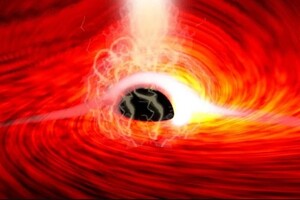Eight of them, scientists at the Massachusetts Institute of Technology were able to catch on X-ray emissions, which periodically emit these mysterious space objects.

Millions of elusive black holes
According to CNN, American astronomers were able to determine the location of eight rare pairs of small black holes and stars orbiting them, thanks to an X-ray moon. Previously, our galaxy had only two known pairs that emit X-rays. The results of a study published Monday in the Astrophysical Journal may help scientists understand how black holes develop. The research team has developed an automated tool for finding echoes from double black holes in data obtained from satellites. This tool has been called the “Reverberation Machine” In the study, scientists used a reverb machine to view data collected by NASA's X-ray telescope called NICER, part of the International Space Station. “We found new signs of reverb in eight sources,” said one of the study's authors. Jinyi Wang, a graduate student at the Massachusetts Institute of Technology. “These black holes have a mass of 5 to 15 solar masses, and they are all in binary systems with normal low-mass sun-like stars.” When black holes suck matter out of a star in their orbit, they can sometimes emit jets, a kind of “burp” – bright streams of particles that travel into space at speeds close to the speed of light. After such a high-energy flash, the black hole returns to a low-energy state. “The role of black holes in the evolution of galaxies is an unresolved issue in modern astrophysics,” said study author Erin Kara, an associate professor of physics at the Massachusetts Institute of Technology. “Therefore, by understanding flares in these small systems, we can understand how such flares in supermassive black holes affect entire galaxies in the centers of which they are located.” Echoes of such X-rays can help astronomers map locations black holes in our galaxy. This is little different from the echolocation used by bats to navigate. But the echoes of black holes are real sounds that we can hear without assistance. “We're just starting to use these light echoes to reconstruct what surrounds the black hole,” Kara said. Read also: Astronomers have discovered a black hole “hidden” in a ring of cosmic dust Black hole – an area of space-time, the gravitational pull of which is so great that it can not leave even objects moving from the speed of light, including the quanta of light itself, is called the event horizon.




